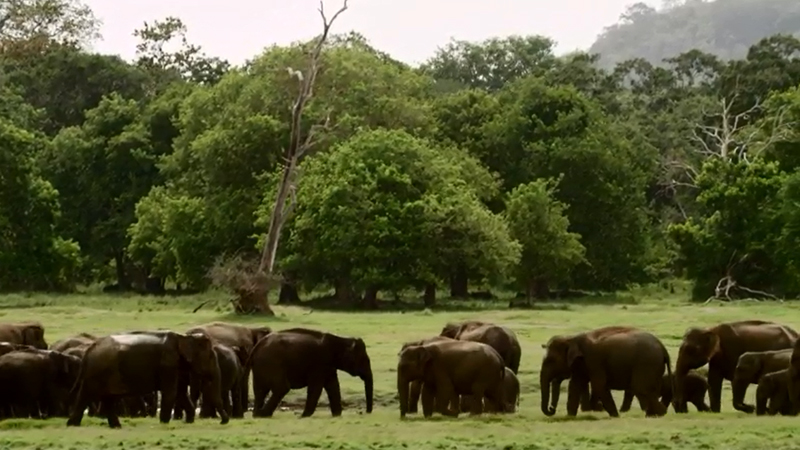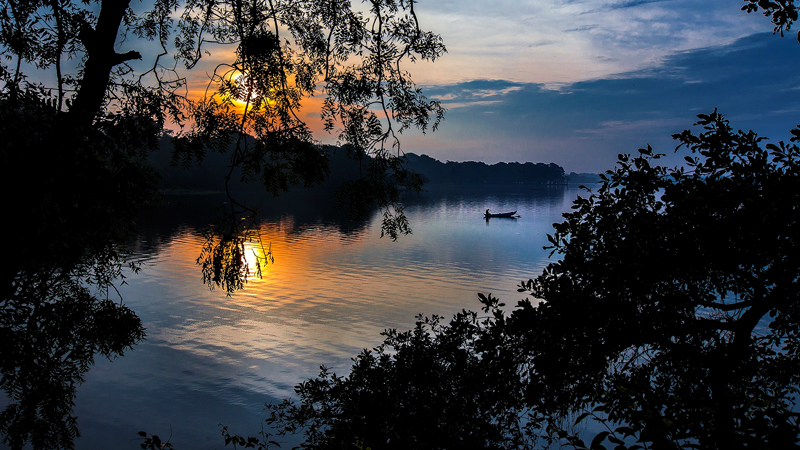
Ur programmet ”Världen Natur – Sri Lanka”. Här möts under torrtiden ett antal elefanthjordar som förenas och blir världens största samling av asiatiska elefanter. Här i programmet får vi reda på att det finns en mängd konstgjorda sjöar som fylls under tiden med monsunregnen och som sedan torkar ut. Dessa konstgjorda sjöar är viktiga för djurlivet och den biologiska mångfalden. Trevligt att se att även söderut har det människan gjorde tidigare haft betydelse för djurlivet. Vi vet från vårt land att människan har haft betydelse för ökningen av den biologiska mångfalden.
Man räknar med 30000 dammar i olika storlekar, en del jättestora som Kala Wewa som är 18 kvadratkilometer, byggda i de torrare delarna från 300 före Kristus till 1200-talet efteråt.

Kala Wewa
En artikel ställer frågan: Why Sri Lanka is super-rich for wildlife - How geology, evolution and ancient cultures forged a super-rich wildlife destination
Människan är en del av förklaringen till att Sri Lanka är så rik i biologisk mångfald.
”This article unveils an internationally significant story. It quantifies how the species per unit area in Sri Lanka is unexpectedly anything from 5 to 13 times higher for certain species groups, than predicted by island biogeography in comparison to other large tropical islands such as Borneo, New Guinea and Madagascar. Sri Lanka is a puzzle: it has large animals which a moderately sized island should not have. In fact it has the highest annually recurring concentration of wild elephants and possibly the highest density of leopards. Unusually for a continental island, large whales are close to shore (best for Blue Whale and super-pods of Sperm Whales). This article is the first to provide a cohesive explanation in plain English as to how planetary physics, evolutionary forces and human factors have worked, almost as if with a design to create a wildlife super-rich island; arguably the best all-round wildlife watching destination”. http://wsimag.com/science-and-technology/10897-why-sri-lanka-is-super-rich-for-wildlife
En jämförelse baserad på ormar.
”Of course we also need to compare land areas from similar latitudes because species richness increases as one travels from high latitudes to the tropics. Let’s take inland snakes for example. Sri Lanka has 89 species in approximately 66,000sq. km. How much more would you estimate that other tropical islands which are approximately between nine to twelve times bigger will have?
The numbers are surprising: New Guinea (86 species in 786,000sq. km.), Madagascar (91 species in 578,000sq. km.) and Borneo (141 species in 734,000sq. km.). One would have expected these islands to have ten times as many species. But none manages even twice as much and the extent which Sri Lanka is above the species-area curve is conspicuous even if you factor in that more species are to be discovered in the bigger islands. The relative species per unit area is extraordinary and is repeated with many species groups”.